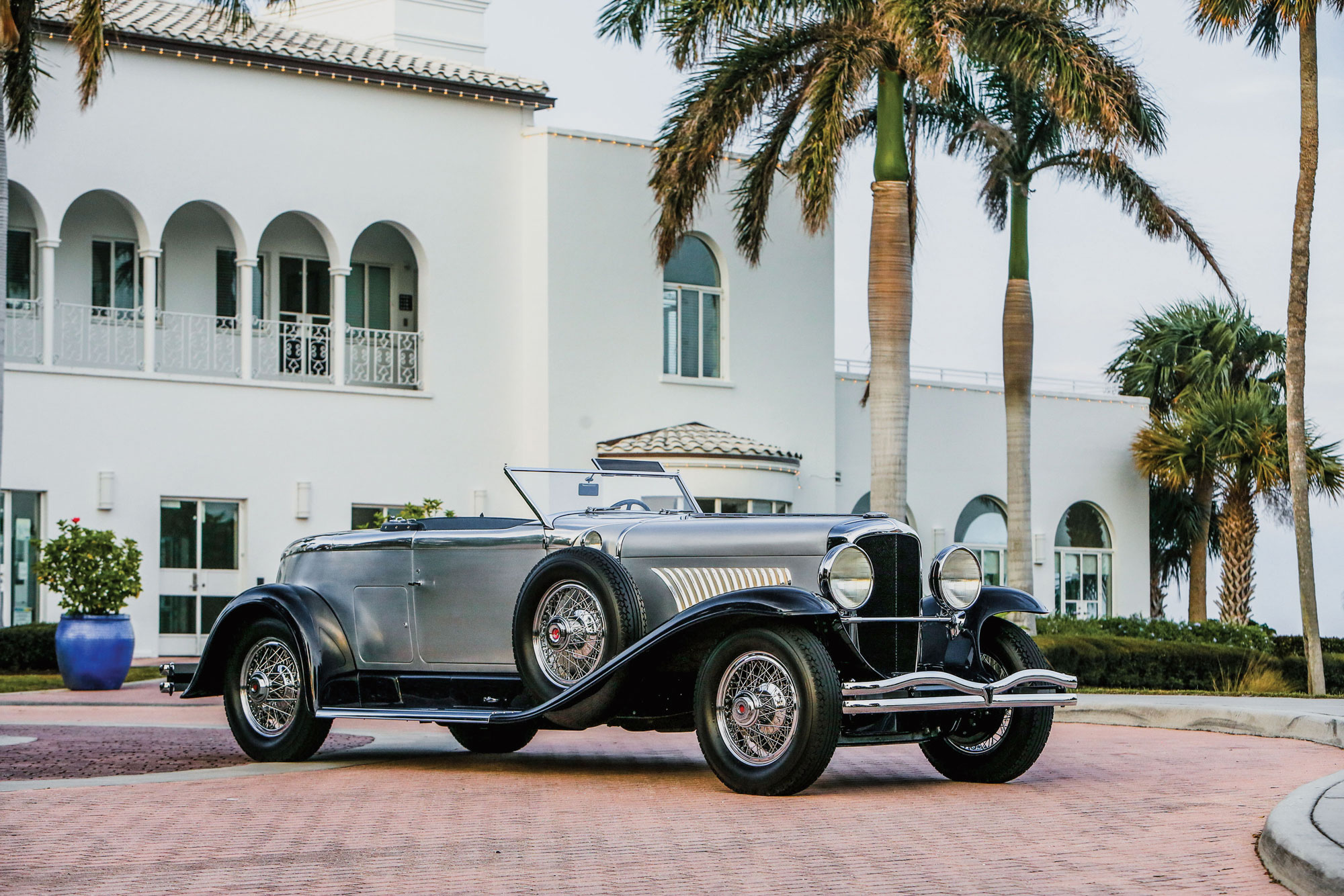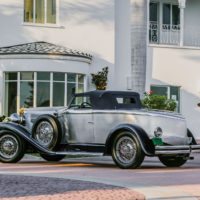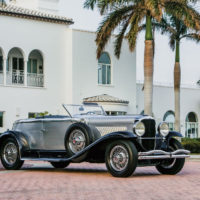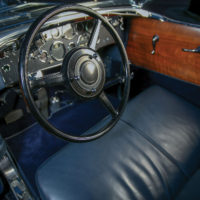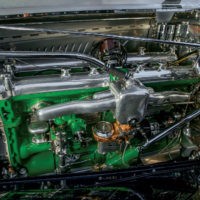SCM Analysis
Detailing
| Vehicle: | 1929 Duesenberg Model J “Disappearing Top” Torpedo |
| Years Produced: | 1928–37 |
| Number Produced: | 480 (including six with this body style) |
| SCM Valuation: | $1,539,000 |
| Tune Up Cost: | $2,500 |
| Chassis Number Location: | Left frame rail |
| Engine Number Location: | Bellhousing, connecting rods |
| Club Info: | Auburn Cord Duesenberg Club |
| Website: | http://www.acdclub.org |
| Alternatives: | 1930 Isotta Fraschini Tipo 8A Roadster, 1928 Hispano-Suiza H6C Boattail, 1930 Bentley 6 ½ Litre Speed 6 Sportsman Saloon |
| Investment Grade: | A |
This car, Lot 156, sold for $5,725,000, including buyer’s premium, at RM Sotheby’s Amelia Island sale on May 22, 2021.
In 1926, E.L. Cord acquired the Duesenberg Motor Company and added it to his burgeoning empire, which would ultimately include Checker Cab, New York Shipbuilding Corp., American Airways, and other companies. He renamed it Duesenberg Inc. and appointed Fred Duesenberg as vice president of engineering.
Bigger, faster, costlier
Cord was determined to build the biggest, fastest and most-expensive luxury automobile America had ever produced. It was to rival the luxurious European offerings from Hispano-Suiza, Minerva and Mercedes-Benz, among others. The Model J would be powered by a 265-horsepower straight-8 engine produced by Cord-owned Lycoming, based on the successful Duesenberg racing engine from the early 1920s. It used an unsynchronized 3-speed transmission, which made the car difficult for many to drive. The chassis was offered in short- or long-wheelbase form and was initially priced at $8,500.
The body and interior were ordered from independent coachbuilders. They could be built to the owner’s requirements or from designs offered by Duesenberg’s chief body stylist Gordon Buehrig. Custom coachwork could double the price of the body. While Duesenberg planned to sell 500 cars per year, the economic havoc of the Great Depression scuttled those aspirations, and only 480 were produced before the automaker’s doors were closed in 1937.
Murphy magic
The Walter M. Murphy Company, who built our elegant “Disappearing Top” Torpedo subject car, was founded in 1920 in Pasadena. Murphy became involved with coachbuilding almost by accident after starting as a dealer for several makes. One of these was Lincoln, which was thought of as being a bit staid for the more-flamboyant West Coast clientele. He decided that bolder paint schemes and altered roof lines would provide a more modern, eye-catching look.
He soon had a long list of Hollywood stars and wealthy industrialists as clients and was creating elegant designs on Minerva, Packard and Pierce-Arrow chassis, among others. Many of the top designers of the era passed through Walter M. Murphy Co., including W.E. Miller, Philip O. Wright and Franklin Hershey.
Murphy became best known for its stunning Duesenberg convertible sedan designs and “Disappearing Top” convertible coupes. In the early 1920s, Murphy manager George R. Fredericks and designer Charles Gerry devised a method by which the convertible top could be stored in a well behind the cabin. The folded roof was then concealed by a hinged decklid for a more streamlined look.
This car, body number 876, just may have been the first produced and would have featured a leather tonneau cover when new, rather than the later metal decklid. It was also one of two delivered without the three distinctive chrome rub strips on the rear fenders but the only one with a rumble seat. In the 1930s, it was updated with then-modern skirted fenders and smaller 17-inch wheels, common in-period alterations.
Been there, done that
This car was last sold by RM Sotheby’s at its 2016 Arizona sale for $3,000,000 (SCM# 270797). Shortly thereafter, RM Auto Restoration was employed, to stunning results. The blue paint on the fenders is flawless and the brightwork sparkles. The body is brushed aluminum with polished beltline and hood side louvers. It has a unique flared lower tail due to the single-person rumble seat.
The car has been recently shown at the Pebble Beach and Amelia Island concours and won Best in Class at the latter. However, that creates an issue for the new owner, as the car will not be invited back to these most prestigious shows for some years. If winning awards is the new owner’s intent, they will be limited to other venues.
At the price paid, this Duesenberg would have to be called well sold. I would speculate that even after all the restoration bills are tallied, the consignor saw a profit. The slight variations and unique rumble seat are minor factors, but they don’t add the seven-figure bump that this car received.
There was, of course, an underbidder moving things along, but this is not the only Murphy Torpedo out there. It is thought that of the six originally constructed, three are still in garages (not including this example) and might reappear at any moment. With this kind of money spent, perhaps soon. ♦
(Introductory description courtesy of RM Sotheby’s.)
